Sawmill Truck Show and Tell
Photos and descriptions of sawmill log and service trucks and loading systems, with the stories behind them. September 5, 2011
Question
I wanted to post a picture of a truck I have been working on, and I hope others will post pictures of theirs. So here is my truck. It is a converted water carboy delivery box truck (F800, no CDL).

Click here for higher quality, full size image
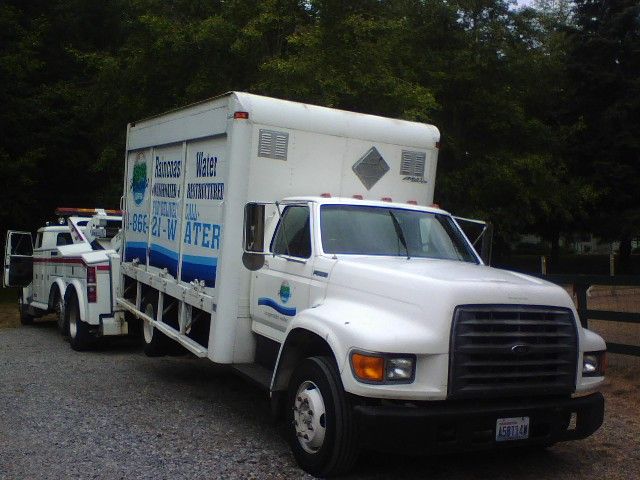
Click here for higher quality, full size image
Forum Responses
(Sawing and Drying Forum)
From contributor H:
Good conversion... Nice log deck (above the wheels). So, how do you get the logs up there?
From contributor T:
I thought a F-800 was a 30,000 gvwr truck, not a 26,000 gvwr, which is non-CDL as a F-700... But I like your creation - saves money. Is deck heavy enough, or did you have to modify thickness?
From the original questioner:
Contributor H, I have two methods - a tow behind forklift, which loads really easy, but then you are managing a tow - and a side mounted winch that will roll the logs up side ramps (I am still making these parts, should be done in a couple of days). I could have chosen a loading arch, but I like the idea of the lighter weight, easier to assemble winch and ramps.
Contributor T, this F800 has juice brakes and a 24.5KGVW. I am sure some are higher, but this one is lower. I did just cut the box wall off, then added a ring of angle iron to make room for a 2" deck. The box bed had 3" I-beams 12" OC.
Box trucks are really affordable and they tend to be in very good condition, since the loading is all from the back.
From contributor R:
Here's my method that has worked very well for several years now.
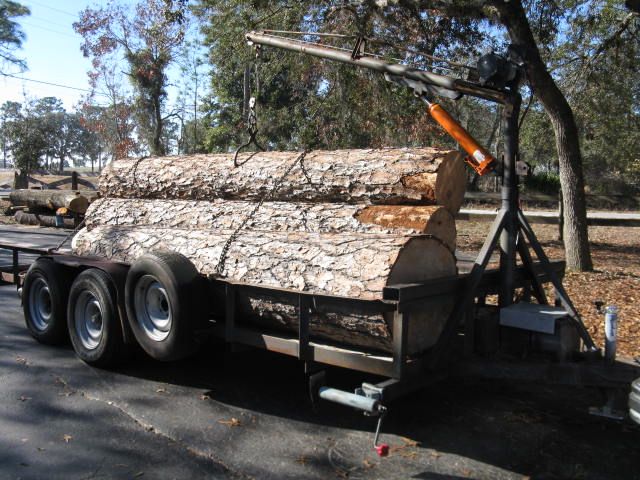
Click here for higher quality, full size image
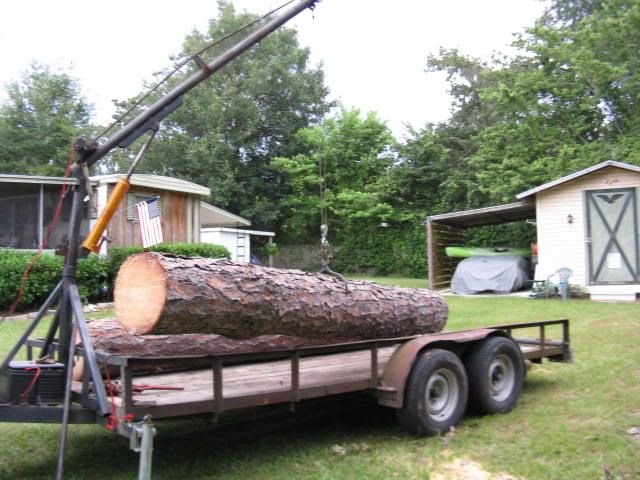
Click here for higher quality, full size image
From contributor S:
Nice truck and really nice trailer! Great job.
From contributor M:
M35A2C deuce and a half. This is the dropside version, so I can roll the logs off either side. It has the military 10,000 lb Garwood front winch. I got a 5,000 lb Autocrane to put in the bed - work in progress. I currently either tow a tractor with loader to load the logs, or winch them up ramps.

Click here for higher quality, full size image
From the original questioner:
Yep, trailers are very effective and keep the overhead down.
Contributor M, that is quite a truck. I guess you would need an exemption or a CDL to drive it. What is the story there? Looks like it was ready to work when you got it. Any mods?
From contributor S:
Contributor M, your truck is out of my fantasy life... That is awesome for a wood hauler.
From contributor M:
No CDL needed because the GVW is under 26,000.
From contributor W:
My new log truck. 1990 Ford F700 with a 14' flatbed. Has a Reese hitch as well as a 5th wheel hitch. Only 46000 miles on it. The sides fold down, but I think I'm going to remove them all together. I'll be parbuckling logs onto it. I have a winch design that will work from either side of the truck.
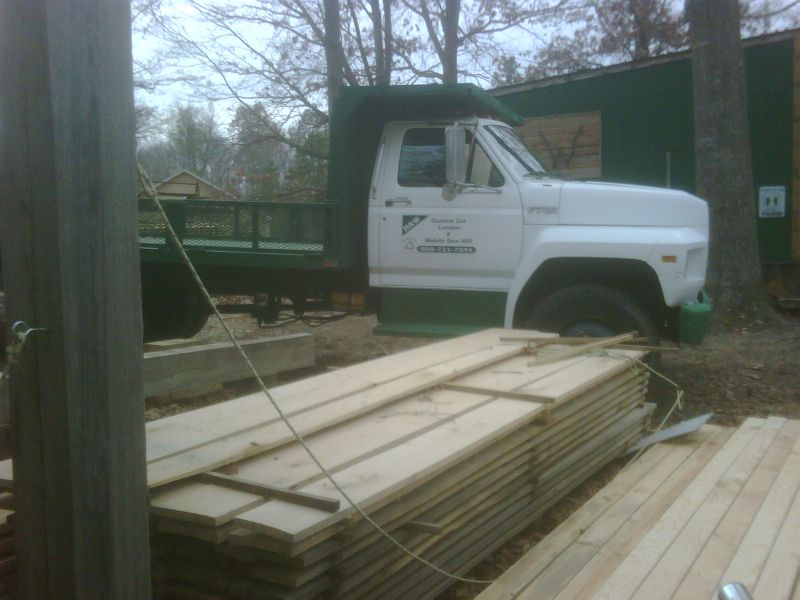
Click here for higher quality, full size image
From contributor U:
I started with a home built A-frame and a skid plate in the back of my pickup truck. Then this same simple system expanded to truck and trailer loads. Nowadays I hire professionals using self loaders and additional carrier trucks.
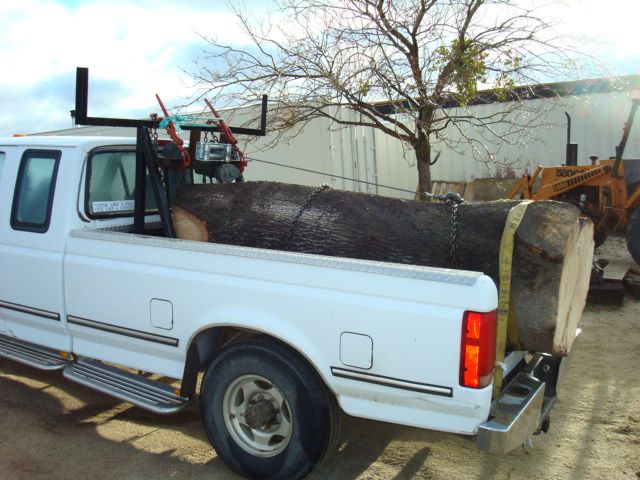
Click here for higher quality, full size image
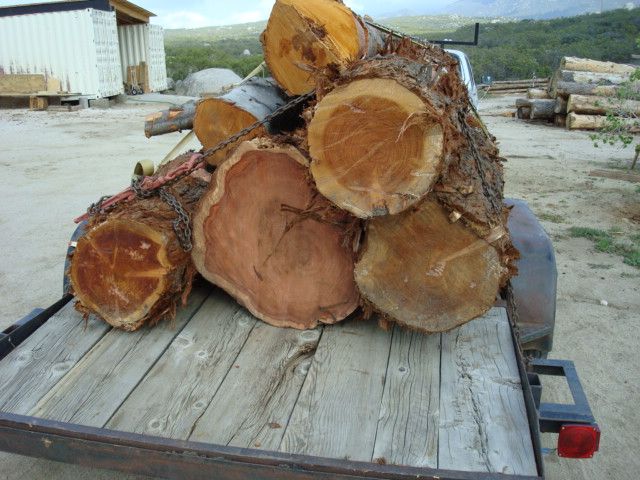
Click here for higher quality, full size image
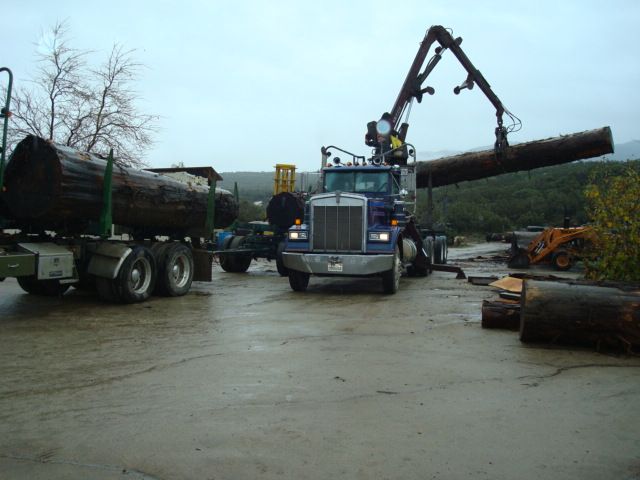
Click here for higher quality, full size image
From contributor T:
My first farm I hauled with an old Ford(?) Louiseville(?). Sold truck and Clark 666 skidder when I was done, or thought I was (it's a fever). Ten years later, I bought an addition to farm and logged using lesser overhead. Purchased a Farmi 501 winch (had tractor and front loader) and used my F-650 paid for work truck and gooseneck trailer to haul. I wish I had the photos of the jaws that hit the ground when I pulled into a log yard with this. The large logs I loaded with my Cat 953 loader.
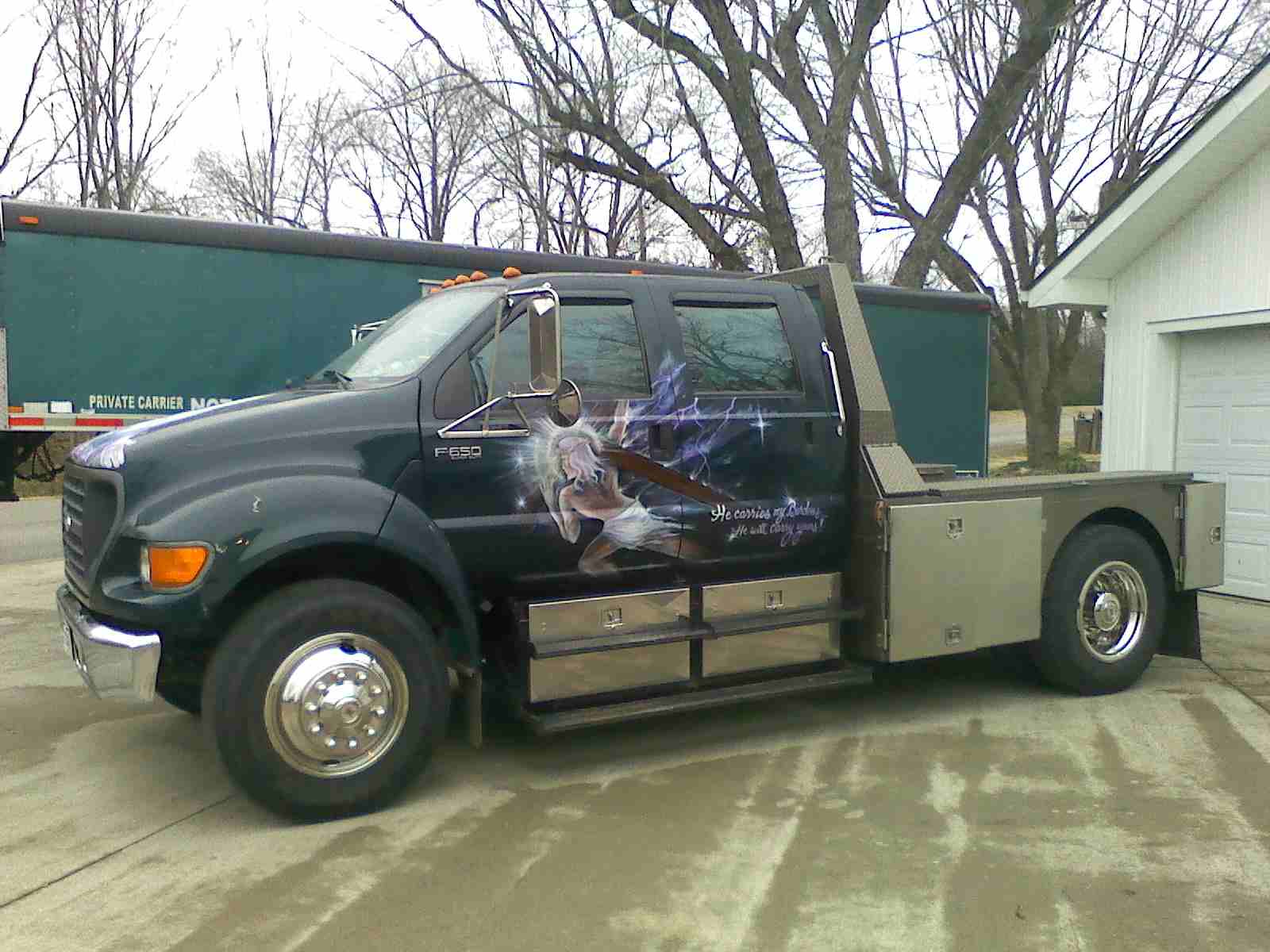
Click here for higher quality, full size image
From contributor A:
I thought I should post a picture of my truck loaded and heading to the tractor show south of Monroe, WA in 2009. I hope you get a chance to visit soon!
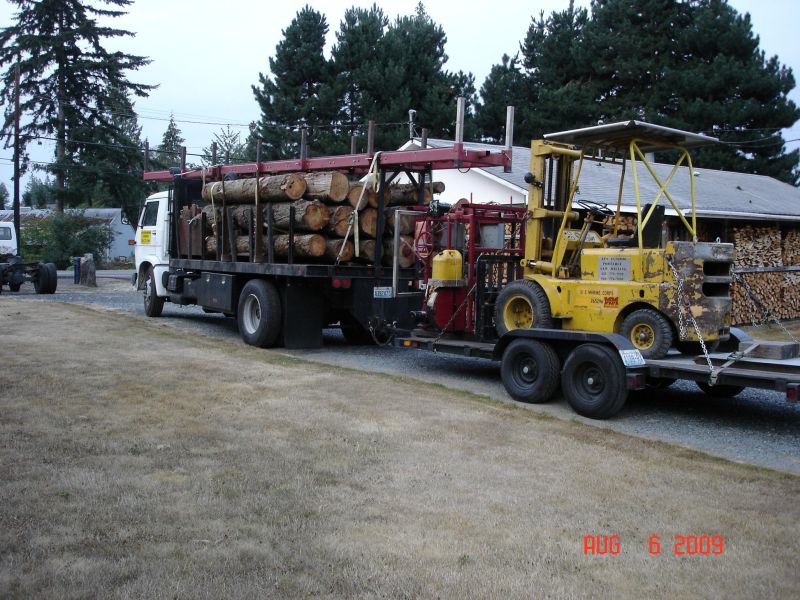
Click here for higher quality, full size image
From contributor T:
I love that truck/trailer setup. Lots of thought put into it.
Questions about your mill: what brand, does it have a power feed, and what type? Is it hard to flip the rails over? How many trees you trimmed with legs up?
Hauled a few logs today.
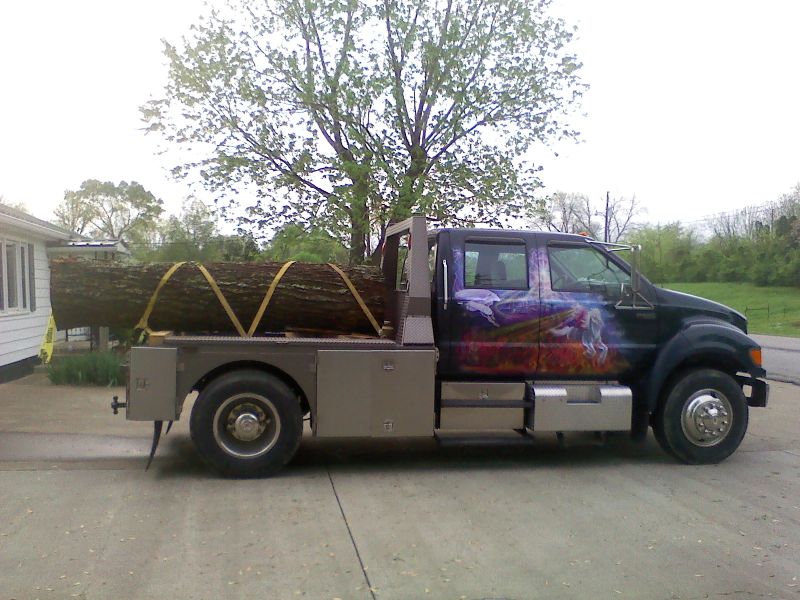
Click here for higher quality, full size image
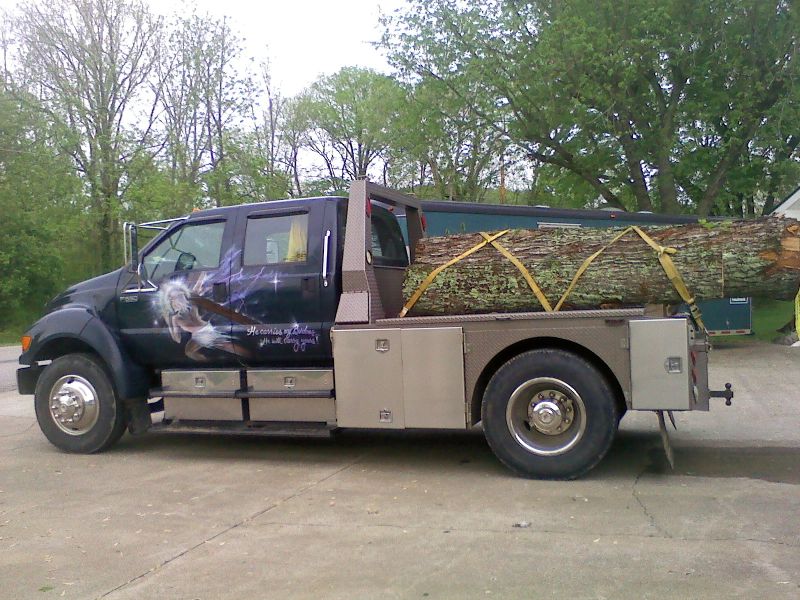
Click here for higher quality, full size image
From contributor W:
Here's a trial run of my new parbuckling rig. I didn't fully load it, because I didn't want to have to unload it with the forklift. I'm using a 9000lb winch attached to the other side of the truck. Works like a champ, for the logs I like to get. I like them just a tad bigger than the one in the video.
If you are seeing this message, your version of flash needs to be upgraded to view this video.
Click here to get the latest version of the Flash player. |
From contributor W:
Hey, contributor T, that's a great looking rig. How do you load it? You have a Bobcat or something? Or are you parbuckling them?
From contributor T:
This is a once in a while couple of logs haul only. Normally I use a gooseneck with this truck. Loading, I use my 5300 JD tractor. Parbuckling, I've seen the term but no idea what it means.
From contributor W:
Parbuckling is what I am doing in the video above. It's primitive but works great.
From contributor A:
Contributor T, I own two of Cooks’ MP-32 gas and electric heads, with three frames that can be used for many different setups. The electric head stays here at the house on the 27 foot frame, whereas the 35 foot and the 15 foot can be used out in the field, but not together. Both heads have power feed and power up and down. All frames can cut multiple logs at one time, where most all other mills cut one log at a time. When I go out to do portable work I can set up in about 30 minutes, and as you can see I bring along a forklift to lift the 3500 pound frame off the top of the semi truck. The forklift is also used to set the head onto the frame after it has been leveled up, run the chain through the gears on the head and tighten up one nut for the 12 volt power feed and I am ready to cut. I have been doing this so long that there has been a lot of thought into speed and efficiency in setup and cutting of multiple logs at one time. I have cut 10,000 feet in one day. I also can cut logs up to 50 feet long with the forklift. I have cut logs longer than the frame many times.
Yes, the legs are locked up for transportation but are lowered down when setting up to do portable work. The reason I bought the second electric head and fabricated the 35 foot frame is I got tired breaking down the mill from the shop every time I did a portable job. Time is money. The faster you can set up and cut, the more money I make. I charge $100.00 hour for milling, whether it is here or out in the field. But when I do portable work, I have a minimum of 5 hours. At this moment in time I do not charge for travel. There also is time taken out in the field for setup and tear down, whereas at home there is no setup time.












